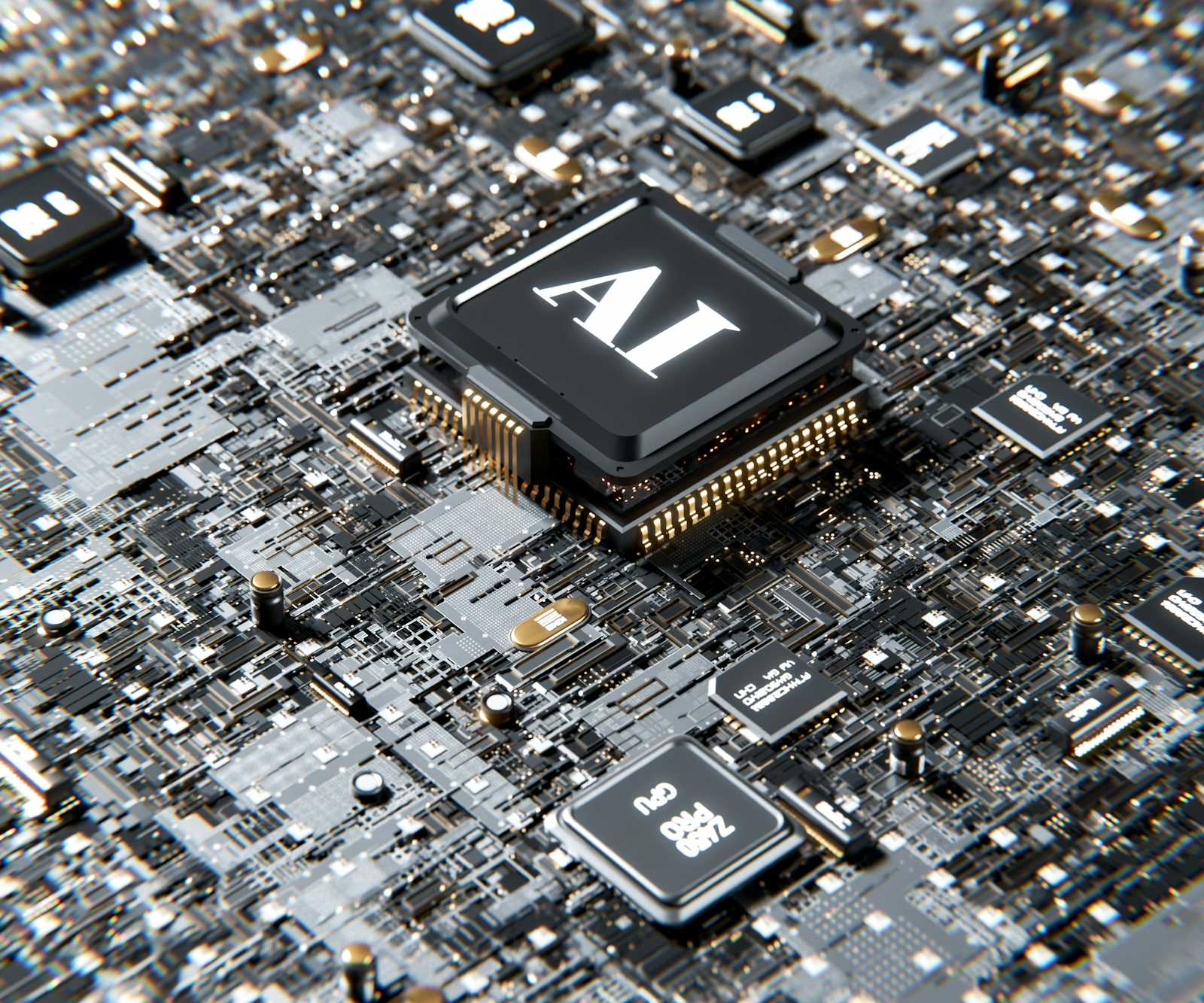Generative AI Solutions: A Comprehensive Guide
 Nick Williams
Nick Williams
Artificial Intelligence (AI) has revolutionized various industries, and among its most exciting advancements is Generative AI solutions. This technology doesn't just analyse data but creates new content based on the data it has learned from, mimicking human creativity and innovation. This comprehensive guide will explore what Generative AI is, its applications, benefits, challenges, and future prospects, providing a detailed understanding of this transformative technology.
What is Generative AI?
Generative AI refers to a subset of artificial intelligence focused on creating new content. Unlike traditional AI, which is primarily used for analyzing and predicting based on existing data, generative AI models can produce original outputs. These models include Generative Adversarial Networks (GANs), Variational Autoencoders (VAEs), and transformer-based models like GPT-4.
Key Technologies in Generative AI
Generative Adversarial Networks (GANs): GANs consist of two neural networks, a generator and a discriminator, which work together in a competitive setting. The generator creates new data instances, while the discriminator evaluates them. This competition drives the generator to produce increasingly realistic data.
Variational Autoencoders (VAEs): VAEs encode input data into a latent space and then decode it to generate new data. They are particularly useful for generating data similar to the training set and are widely used in image and speech synthesis.
Transformers: Models like GPT-4 use transformer architecture to generate human-like text. These models are trained on vast datasets and can produce coherent and contextually relevant text based on a given prompt.
Applications of Generative AI
Generative AI has a wide range of applications across various industries, transforming the way businesses operate and innovate.
1. Content Creation
Text Generation: AI models can generate articles, stories, and even poetry, which are nearly indistinguishable from human-written content. This can be used for automating content creation for blogs, news sites, and marketing materials.
Image and Video Generation: GANs can create realistic images and videos, useful in entertainment, advertising, and social media. AI-generated art and deepfake technology are examples of this application.
Music Composition: AI can compose original music tracks, helping musicians and producers create new works. This is particularly useful for generating background scores for films, games, and advertisements.
2. Product Design and Prototyping
Design Automation: Generative AI solutions can create multiple design prototypes, offering innovative solutions and speeding up the product development cycle. This is widely used in automotive, aerospace, and consumer electronics industries.
Customisation: Businesses can use AI to offer customised products based on individual customer preferences, enhancing the user experience and satisfaction.
3. Healthcare
Drug Discovery: Generative AI solutions can help in the design of new drugs by predicting molecular structures that could be effective against specific diseases, significantly speeding up the research process.
Medical Imaging: AI can generate enhanced medical images from lower-quality inputs, improving diagnostics and treatment planning.
4. Marketing and Advertising
Personalised Marketing: AI can generate personalized marketing content based on user data, increasing engagement and conversion rates.
Ad Creation: Generative AI can create visually appealing and effective advertisements, helping businesses to reach their target audience more efficiently.
5. Gaming and Entertainment
Game Development: AI can generate realistic game environments, characters, and narratives, providing a richer and more immersive gaming experience.
Film Production: AI can assist in generating scripts, storyboards, and even special effects, streamlining the production process.
6. Data Augmentation
Synthetic Data Generation: Generative AI can create synthetic datasets that mimic real-world data, useful for training other AI models when actual data is scarce or sensitive.
Scenario Simulation: AI can generate possible future scenarios, helping businesses in risk management and strategic planning.
Benefits of Generative AI
The adoption of generative AI solutions offers numerous advantages to businesses and industries, driving innovation and efficiency.
1. Enhanced Creativity and Innovation
Generative AI acts as a creative partner, providing innovative ideas and solutions that humans might not think of. This can lead to the development of unique products, services, and content, giving businesses a competitive edge.
2. Personalisation at Scale
AI can personalise customer interactions and experiences on a large scale. By generating tailored content and recommendations, businesses can improve customer satisfaction and loyalty.
3. Efficiency and Cost Reduction
Automating routine and repetitive tasks with AI reduces the time and resources required for these activities. This allows human employees to focus on more strategic and complex tasks, improving overall productivity.
4. Advanced Data Utilisation
Generative AI can synthesise new data from existing datasets, enhancing the capabilities of predictive models and providing deeper insights. This is particularly valuable in fields like healthcare, finance, and marketing.
5. Improved Customer Experience
AI-driven chatbots and virtual assistants provide more natural and context-aware interactions, enhancing customer service and support. Additionally, AI-generated interactive content can create more engaging and immersive user experiences.
Challenges of Generative AI
Despite its numerous benefits, generative AI also presents several challenges that need to be addressed.
1. Ethical Concerns
The ability of AI to create realistic content raises ethical issues, particularly with deepfake technology and AI-generated fake news. Ensuring the responsible use of generative AI is crucial to prevent misuse.
2. Quality Control
AI-generated content can sometimes be flawed or biased, reflecting the limitations of the training data. Ensuring high-quality and unbiased outputs requires ongoing monitoring and refinement of AI models.
3. Technical Complexity
Developing and implementing generative AI solutions requires significant technical expertise and resources. This can be a barrier for smaller businesses and organisations with limited budgets.
4. Data Privacy
Generative AI relies on large datasets, which often include personal information. Ensuring data privacy and compliance with regulations like GDPR is essential to protect user data and maintain trust.
5. Interpretability
Understanding and interpreting the outputs of generative AI models can be challenging. Developing methods to explain AI decisions and outputs is important for transparency and accountability.
Future Prospects of Generative AI
The future of generative AI is promising, with ongoing advancements expected to expand its capabilities and applications further.
1. Advancements in AI Models
Continued research and development will lead to more sophisticated AI models, capable of generating even more realistic and complex content. This will open up new possibilities in fields like virtual reality, autonomous systems, and creative industries.
2. Integration with Other Technologies
Generative AI integration will increasingly integrate with other emerging technologies like the Internet of Things (IoT), blockchain, and 5G. This will enhance the functionality and connectivity of AI solutions, providing more comprehensive and innovative applications.
3. Ethical and Regulatory Frameworks
As generative AI solutions becomes more widespread, there will be a greater emphasis on developing ethical guidelines and regulatory frameworks to ensure its responsible use. This will help mitigate risks and promote trust in AI technologies.
4. Increased Accessibility
Advancements in AI development tools and platforms will make generative AI services more accessible to businesses of all sizes. This will democratise AI innovation, allowing more organisations to benefit from its capabilities.
5. Enhanced Collaboration
Generative AI will facilitate greater collaboration between humans and machines. By augmenting human creativity and decision-making, AI will become an invaluable tool in various professional and creative fields.
Conclusion
Generative AI represents a transformative leap in artificial intelligence, offering unprecedented capabilities in creating new content and solutions. Its applications span a wide range of industries, from content creation and healthcare to marketing and entertainment. The benefits of generative AI are significant, including enhanced creativity, personalisation, efficiency, and advanced data utilisation. However, challenges such as ethical concerns, quality control, and technical complexity must be addressed to fully realise its potential.
The future of generative AI is bright, with ongoing advancements set to expand its impact even further. By fostering responsible use and leveraging its innovative power, businesses and industries can harness generative AI to drive growth, innovation, and success in the digital age. As we continue to explore and develop this technology top AI development companies will undoubtedly play a pivotal role in shaping the future of artificial intelligence and its applications.
Subscribe to my newsletter
Read articles from Nick Williams directly inside your inbox. Subscribe to the newsletter, and don't miss out.
Written by

Nick Williams
Nick Williams
Hello, I'm Nick Williams , a passionate developer with a love for all things tech. With experience in the field, I've gained a deep understanding in Crypto Wallet Development, White label Wallet ,Defi Development and Crypto Trading bot development . I enjoy exploring new technologies, solving complex problems, and sharing my knowledge with others. On Hashnode, you'll find my thoughts, learnings, and experiences in the world of development.